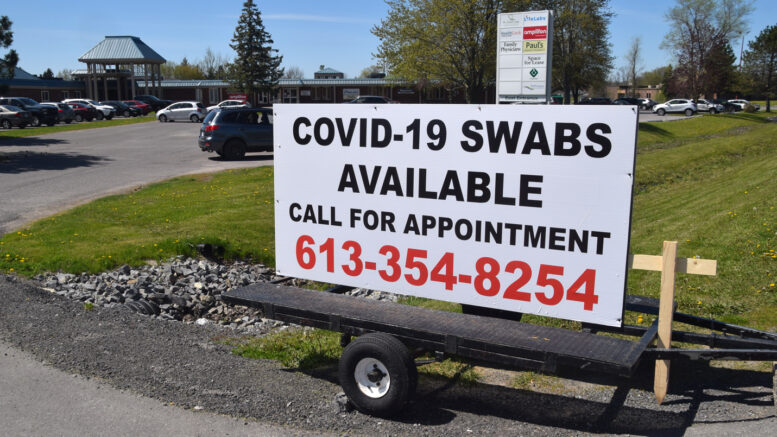Adam Prudhomme
Editor
Lennox and Addington County General Hospital chief of staff Dr. Kim Morrison spoke to Greater Napanee council via Zoom last Tuesday to talk local COVID-19 testing and surveillance.
Among the topics Morrison covered were updates on what researchers have learned about the virus, as well as the strategy in place to track its spread through the Kingston, Frontenac and Lennox and Addington region.
“The Ministry of Health over the past three months has had about, it’s been 90 days and there’s been probably 60 different versions of its testing surveillance,” said Morrison. “Most of that has evolved over time as we understand more of the epidemiology of COVID-19 and how it’s transmitted and where clusters have happened. As I’m sure most people know, there are big clusters in Ontario where there are the majority of the cases. We have been very fortunate in our area and in our Public Health area of KFLA to have this nice little bubble around us without many cases and no positive cases in the Napanee area since April.”
As of Friday morning, the KFLA Public Health website indicated all 63 reported cases since the start of the pandemic have been resolved with no deaths.
“That doesn’t mean that we can’t lose our vigilance,” said Morrison. “We know that COVID is going to continue to spread and that it has to spread until there’s such time that there is a vaccine and enough uptake of the vaccine to protect the majority of the population. The goal is really to have a controlled spread that the health care system can maintain and that our economy can maintain such that people can live their lives not in fear, but being respectful of the virus and what it can do.”
As researchers have learned more about the virus, they’ve updated some of the potential warning signs that might suggest someone has been infected.
“Currently in Ontario and in Napanee, testing is open to anybody that wants a test,” said Morrison. “There are specific groups of people who really need to be tested. Most important they are those with any symptoms, and the symptoms of COVID have evolved also over time as we’ve learned more about the virus to include not only the respiratory symptoms like cough and fever and shortness of breath, but really a myriad of any type of respiratory symptoms involving pretty much your head to your toe and in certain populations, especially the elderly, it can present a-typically, with generalized weakness or more falls or a feeling of fatigue, sometimes gastrointestinal symptoms. In children it can also present differently, sometimes it presents with a rash. The vigilance is also around recognizing that COVID has many faces and any sort of new symptoms would be prudent for someone to go and get tested.”
Morrison went on to add for anyone who travels to places that are COVID-19 ‘hot spots’, such as Toronto or Montreal or any area with a high number of positive cases, it would be a good idea to get tested once returning, even if not presenting any symptoms. It’s also recommended anyone who comes in contact with someone who tests positive that they too get tested. That includes even one step further, anyone who has been in contact with someone who has been in contact with someone who has tested positive. Those in professions that would be considered ‘high risk’ for infection, such as in being in a small room with other people, are recommended to get tested about once a month.
Nasal swabs to test for the presence of COVID-19 are offered seven days a week from the Lenadco building, located at 310 Bridge St. W in Napanee.
“It’s not a difficult test to do,” said Morrison. “It’s not the most comfortable thing you’ve ever had done in your life….but literally its 30 seconds of your day and then you move on.”
Morrison says swabs are sent to Kingston to be tested and results are typically known within 24 hours.
“The role of a-symptomatic testing, so meaning testing of people who don’t have any symptoms whatsoever and don’t know that they’ve had any contact with people who could be possibly positive, has been controversial,” said Morrison. “But in our area especially, it’s really key to our surveillance strategy. It is the only way that we’re going to know when COVID comes back into our community…We need to know when it gets here. Unless we test, we’re not going to know.”

